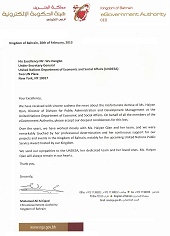 A well-written condolence letter is not only a tribute to the dead, but a source of courage and comfort to the living. Unfortunately, many people do not know the essence of writing a good condolence letter. The following guidelines on how to write a thoughtful condolence letter do not represent a set of rigid rules, but rather a way of expressing your sympathy, feelings, love and concern in well-written communication.
A well-written condolence letter is not only a tribute to the dead, but a source of courage and comfort to the living. Unfortunately, many people do not know the essence of writing a good condolence letter. The following guidelines on how to write a thoughtful condolence letter do not represent a set of rigid rules, but rather a way of expressing your sympathy, feelings, love and concern in well-written communication.
• Acknowledge the Loss
If the person you are writing to is not the one who informed you about the loss, it is advisable to note it down on how you came to learn about the news. This is a perfect opportunity to show your shock and dismay at hearing about the death. Through this, you will be able to set the tone of the letter. It is also advisable to mention the name of the deceased.
• Express Your Sympathy
Always express your grief sincerely. Using sympathetic words will show the grieving person that you care, and you are also in pain for their loss. It is also very important, to be honest. Do not be afraid to state what caused the death, even if it is suicide. If you knew the person who died directly, express your sympathy by reminding the bereaved that they are not suffering alone during this difficult moment.
• Write Down the Special Qualities of the Deceased
• Recount a Memory about the Deceased
The memories of the deceased are usually dimmed when the person has just died. For those who are grieving, it can be very frightening. When recounting the life moments of the deceased, try to show respect, affection and appreciation. In the letter, try only to say a few words on how the deceased influenced and touched your life. Try to add some humorous incidents that can be gratefully appreciated. Remember laughter is a great healer.
• Close with a Thoughtful Phrase or Word
The closing part of a condolence letter is very important. The concluding words or phrase should clearly reflect the truth of your feelings. For example, you can use words such as “sincere,” “love,” “yours truly,” “fondly,” Phrases that can show your sympathy include: “you are in my thoughts and prayers,” “my tears and heart are with you,” “you know you have my deepest sympathy and love,” “my thoughts are with you now,” and “I send you my deepest condolences.”
When writing a condolence letter, ensure you write it as if you are speaking with the bereaved. Understanding the above five components on how to write a condolence letter will help you write a thoughtful letter.